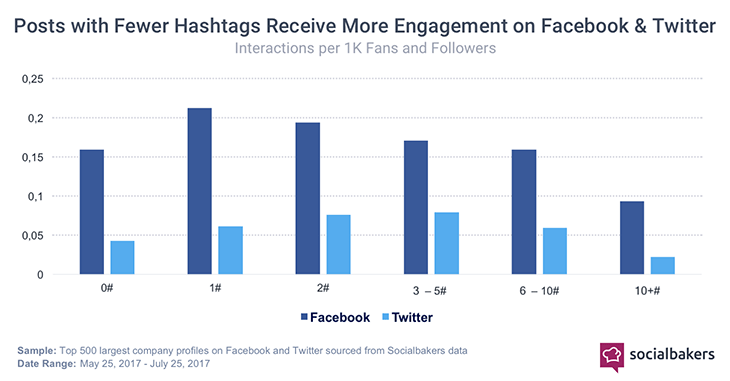Hashtag campaigns and general usage of hashtags is often considered as the cooler and more powerful way of expressing opinions about a certain thing (images and videos as well) or experience. Over the years however, hashtags have been used and overused and in a lot of cases even gone extremely wrong. While today’s millennials live by their dictionary of hashtags, brands need to research and be sure that they use the right ones.
If you thought there’s nothing like overuse of hashtags, today’s analysis of hashtag use shows that posts that have more than 2 hashtag association receive lesser engagement. Also, if you thought using hashtags will only give you positive effects, I’ll give you a few examples of how negative hashtags can get. While combining multiple words and coming up with interesting hashtags can be fun and a brilliant idea, it’s always better to check if that hashtag could be read in another way or has/is being used for some other purpose.
Do’s of Hashtags
1. Hashtags that resonate: Use hashtags which bring out the meaning of your brand or helps enunciate the message your brand is trying to put out. While using hashtags which are existing and popular can be a good start, it will eventually take away from the individual image of your brand. A classic way to grab attention with a good hashtag is by creating a campaign and using a shareable hashtag. For example, Flipkart’s #BigBillionDay, which talks specifically about the amazing discounts on products offered on a certain day and of course the brand justifies the usage of the hashtag by not disappointing their customers.
2. Targeted Hashtags: This is exactly the opposite of using many hashtags. Multiple hashtags are only making your brand ideology disappear, between the divided attention each hashtag adds. It is always better to ensure your customers know with the first look, what your brand is trying to communicate. Targeted hashtags helps you attract valuable customers, the ones who are actually interested in your brand, filtering out the ones who will finally end up spilling out from your sales funnel. For example, Cadbury Dairy Milk’s #KuchMeethaHoJaye campaign, which clearly targets the people who have a sweet tooth.
3. Right Platform: The usage of hashtags has been popularised on various social media channels and rightly so, however, its usage differs from platform to platform. Hashtags work best while sharing content on platforms which enable image and video sharing, yet at different intensities. While Twitter started the trend of hashtag usage and Instagram followed, Facebook still isn’t very popular when it comes to hashtag usage, even though it allows sharing photos and videos. This however, is slowly changing with Facebook enabling linked sharability of Instagram uploads on FB wall.
Don’ts of Hashtags
1. Just because it’s trending: Staying updated about the trending hashtags and using them intelligently can definitely help you up your game against your competitors, but using hashtags just because they are trending might not be a great idea. It is important to make sure that the hashtags you use marry your brand’s outlook. While using hashtags without proper reference can help you gain visibility, it is short lasting and carries high chances of backfiring. Adding unnecessary hashtags to your messages is only going to leave your audience irritated and you might even lose out on your loyal customers in the process.
2. Hashtag Overpopulation: #It #is #not #ok #to #do #this. Yes, looking at posts that use so many hashtags is as annoying to look at as it was to read the above sentence. It not just steals the visual appeal of your post, but also displays how desperate you are for attention. Overuse of hashtags is a complete no-no, especially for brand accounts. In fact, according to a report by Socialbakers, here’s how your posts perform based on the number of hashtags you use.
3. Don’t String Words to make Hashtags: While many a times this has worked for brands, and can actually lead to amazing results if done thoughtfully, stringing multiple words together can also have its own side effects. For example, a certain hashtag which went viral, for the sheer foolishness of the creator is #Susanalbumparty which was supposed to be a stringed together version of “Susan Album Party”, ended up being an outburst of jokes, for you know what! While people trolled the hashtag, it also left an irreparable damage on the “brand name”, here a person.
Apart from the above, there are certain hashtags which have been used and overused in personal accounts, which often tend to get into a brand’s marketing book as well. This might not be the best idea; hashtags like #Blessed, #NoFilter, #JustSaying, #Nbd, #SorryNotSorry dilutes the brand image and leaves you looking like a bragger, and being a brand, you sure don’t want to look like one.



